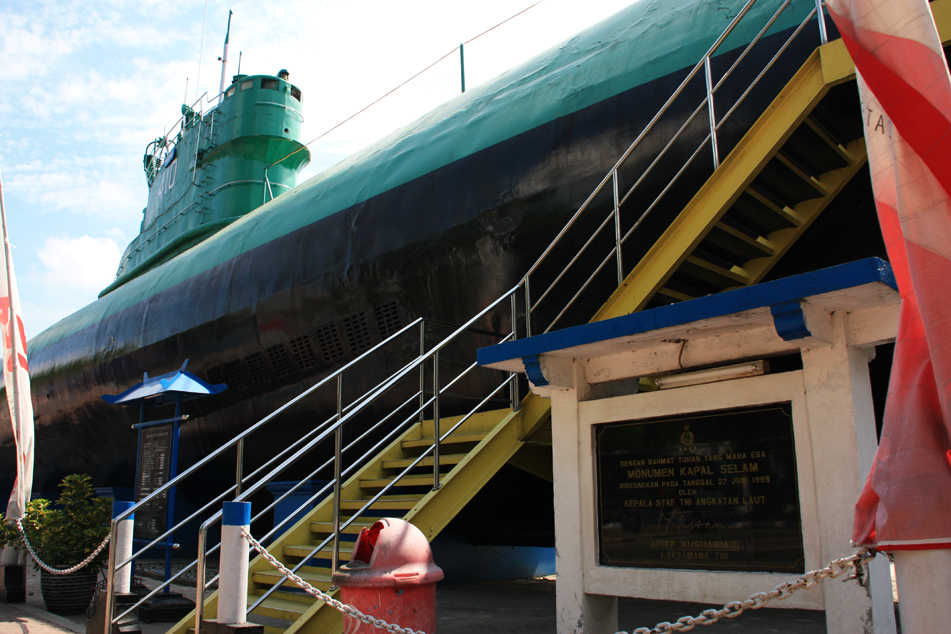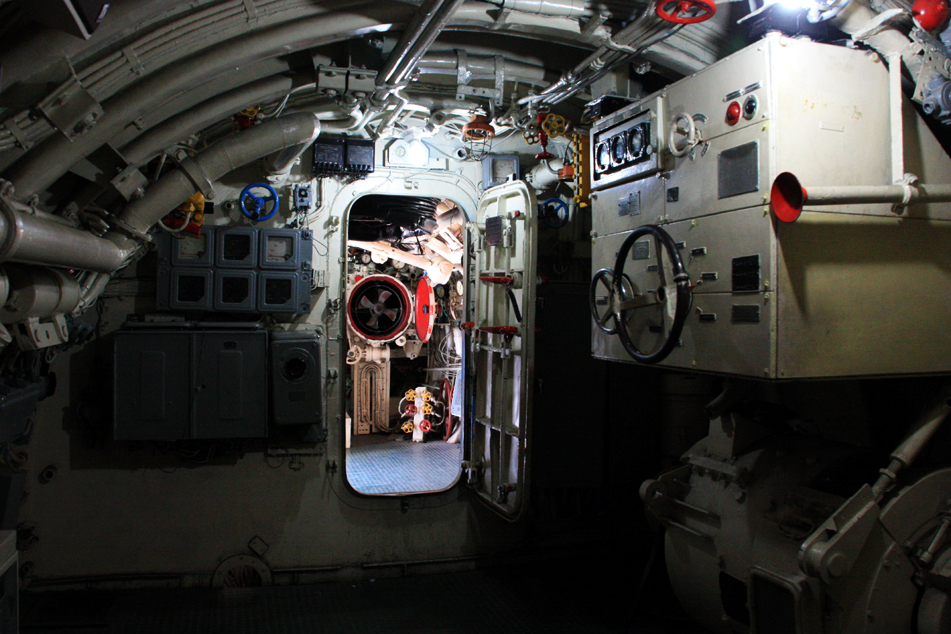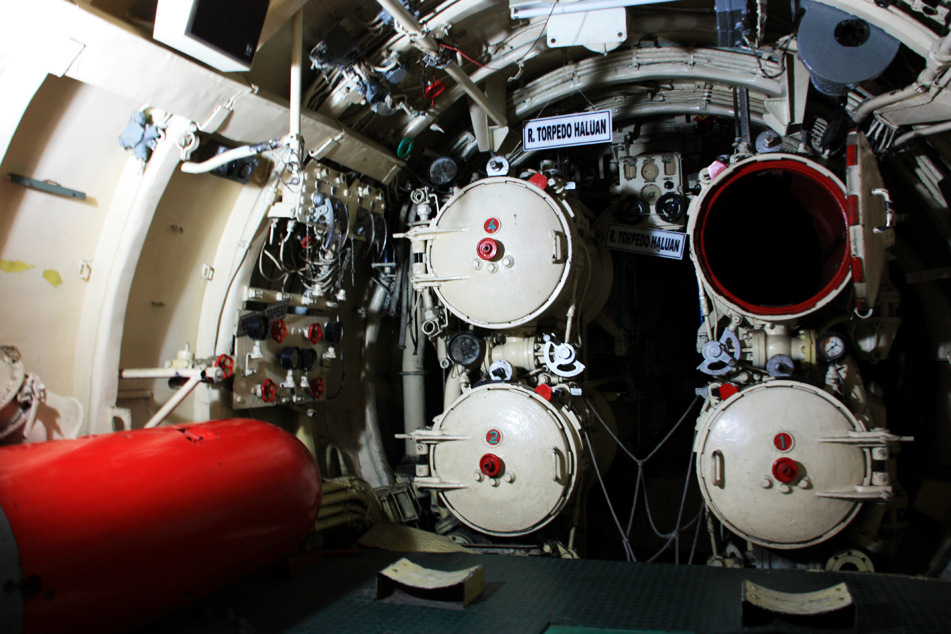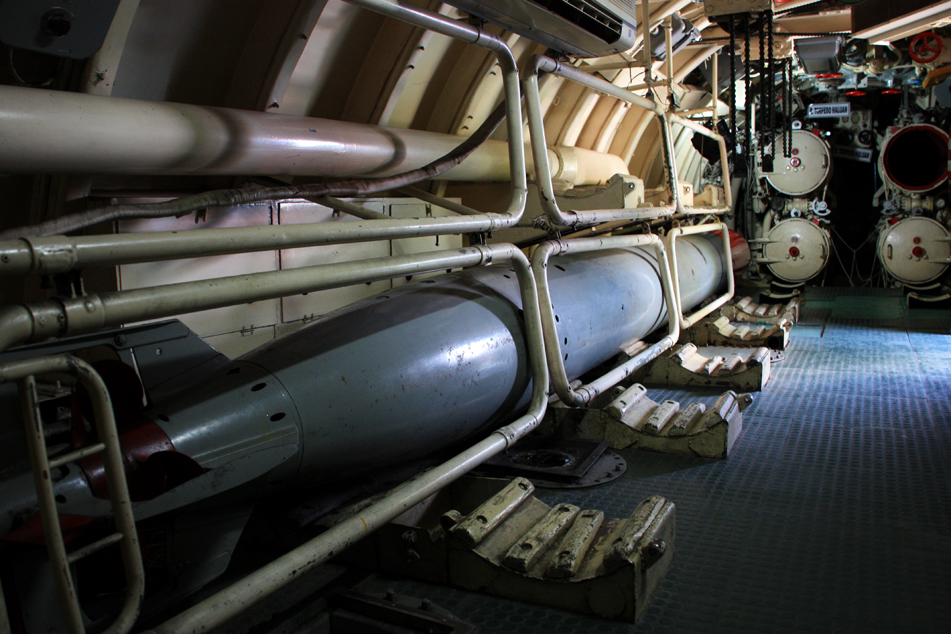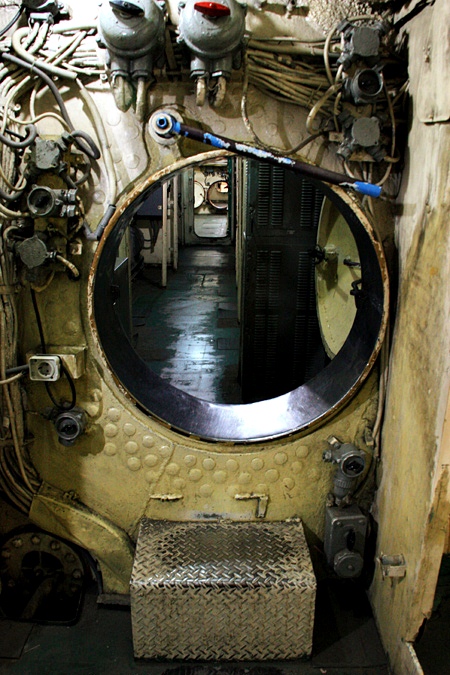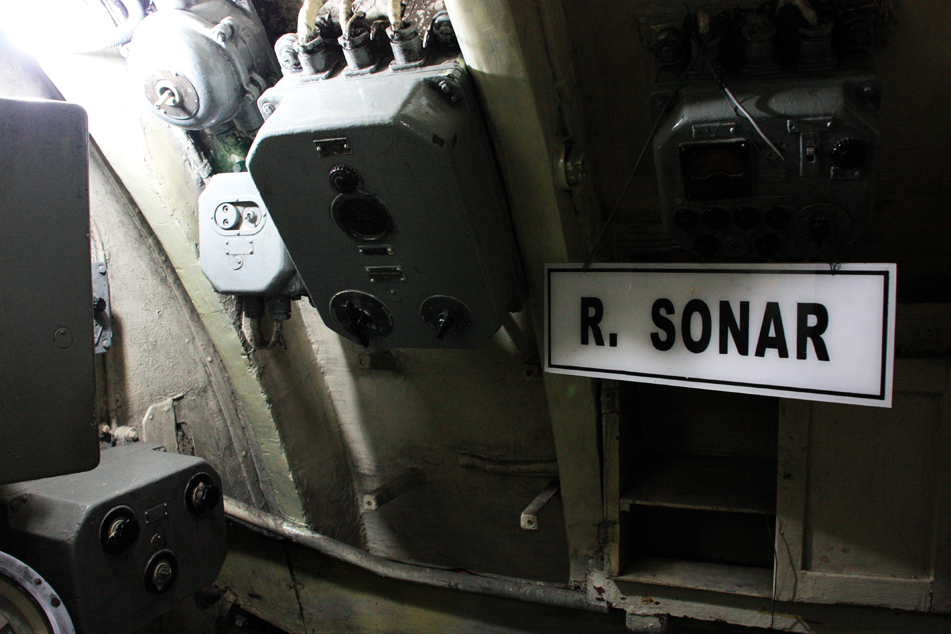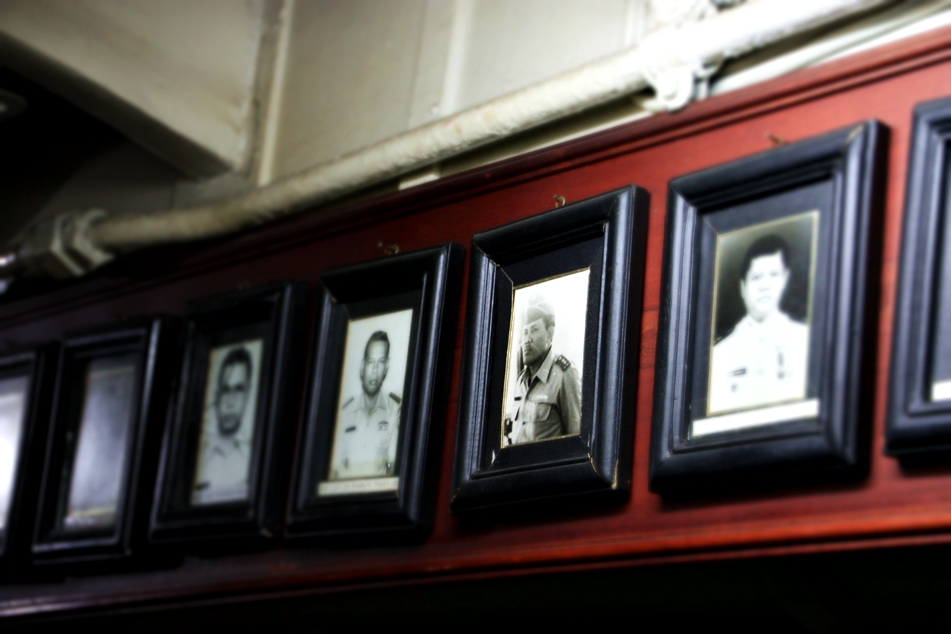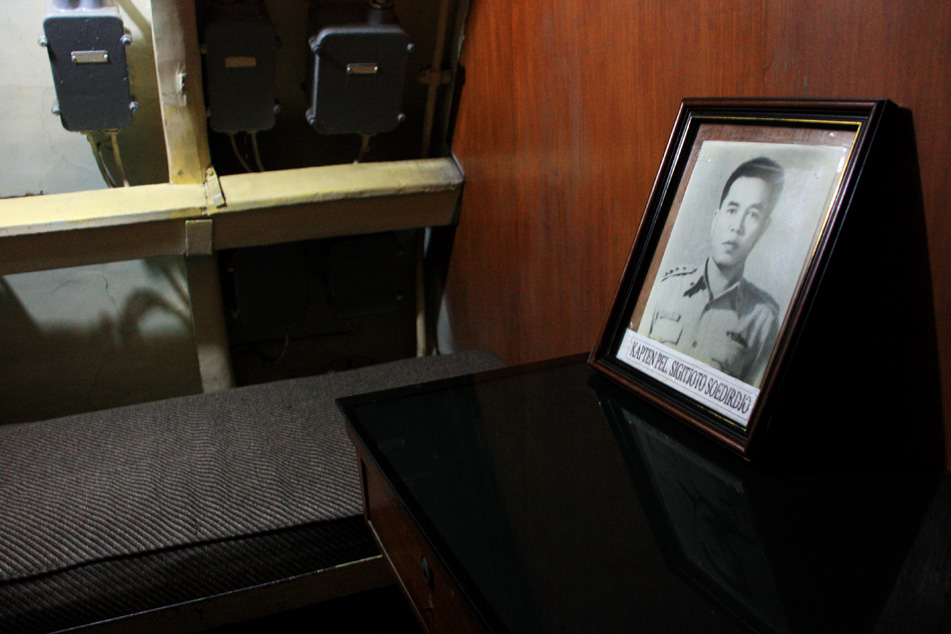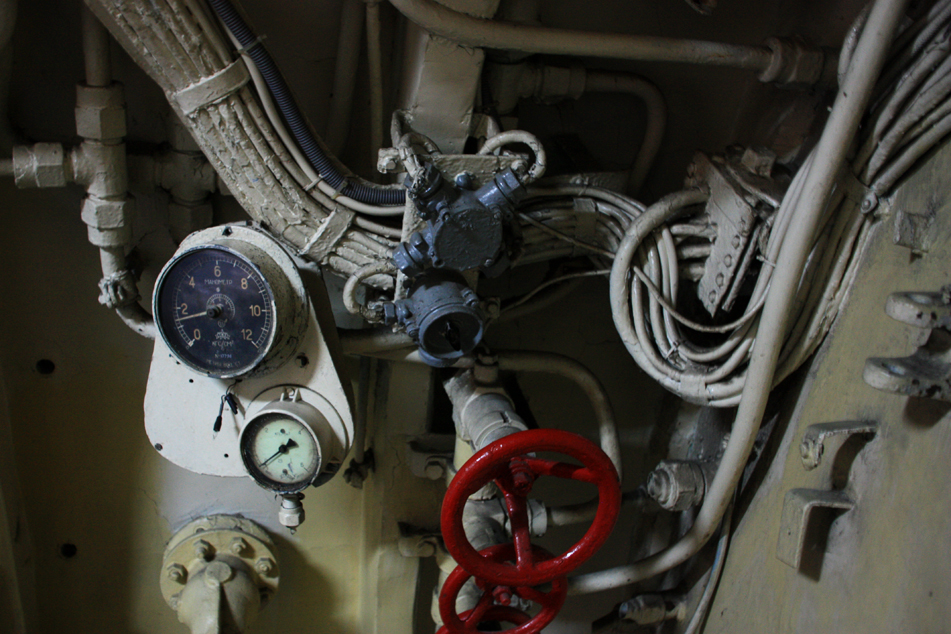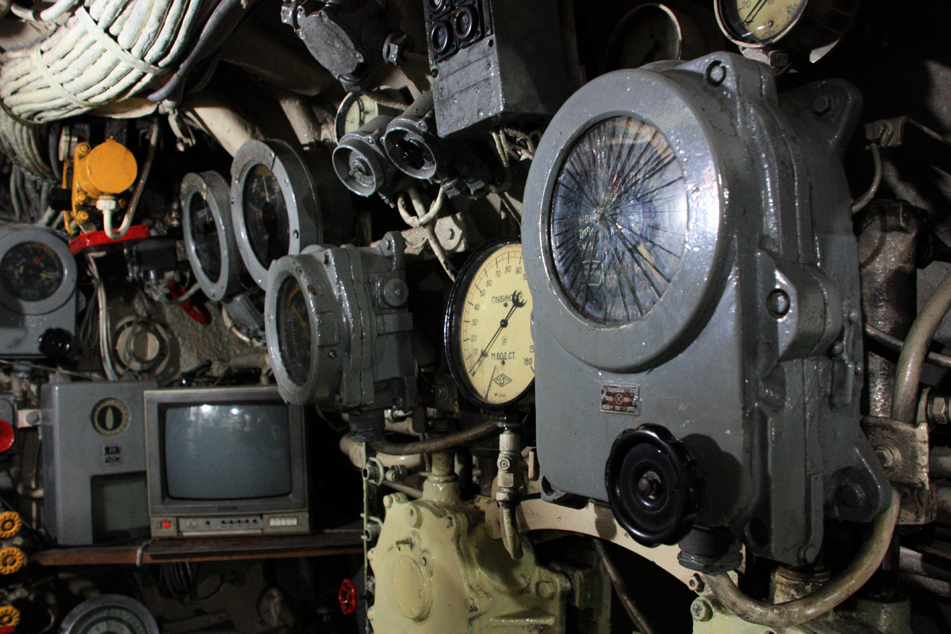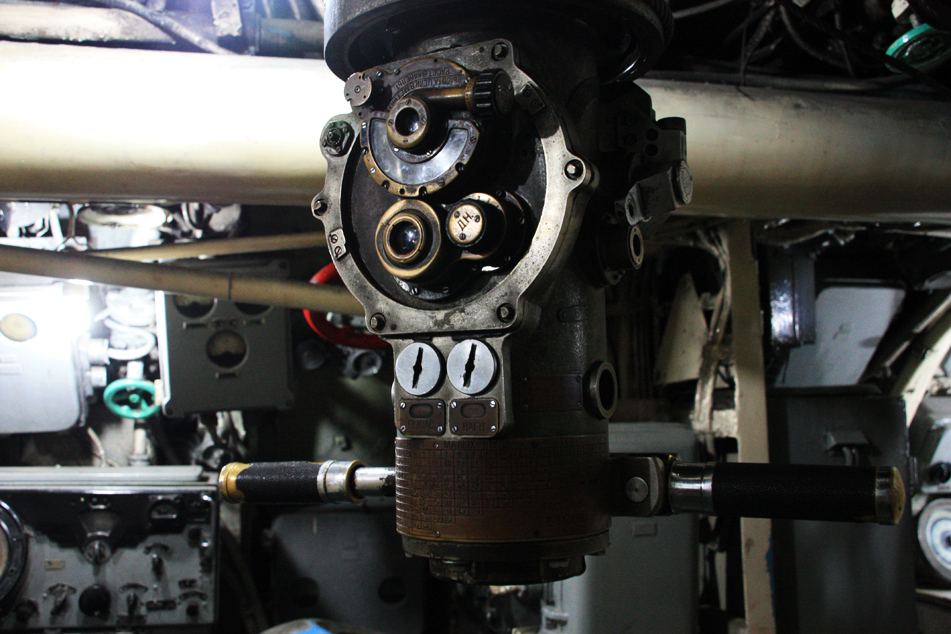Monkasel – Inside a Submarine
Having suffered claustrophobia and thalassophobia (fear of the ocean) I couldn’t imagine myself living inside an encapsulated vessel plunging the deep, dark seas for days where gigantic and eerie sea monsters roam free. Perhaps I had too much of Jules Verne and his Nautilus during my younger days; perhaps it is a fallout of my childhood obsession of the sci-fi movies and Greek mythology. And the tragedy of the Kursk gives me the willies. The only happy thought I have about submarines is the Beatles’ version. A yellow one.
So when I found out there’s one submarine for sampling near where we stay in Surabaya, I knew I had to see it. If I can’t handle it on sea, at least I can experience it on land. We were just a few hours from boarding our flight back to Kuala Lumpur and had nothing else to do anyway. The submarine monument (i.e. Monumen Kapal Selam, shorted as Monkasel by the locals) is just a short walk from our hostel in Jalan Embong Kenongo that within a few minutes we arrived at its front gate.
Located at No. 39, Jalan Pemuda, the relic of Indonesia naval history is just next to Surabaya Plaza and has been there since 1995. The fleet – Pasopati 410, is one of the first Indonesia’s submarine of the Russian Whiskey class, a type engineered by the Soviet Union during the Cold War period. Built in Vladivostok in 1952, the sub was purchased by the Navy of the Republic of Indonesia a decade later and saw service in the Battle of Trikora to liberate the West Papua from the Dutch occupation and was in used ever since. The submarine was only decommissioned in 1990, and five years later saw it reassembled at its current location as museum.
The submarine is divided into several chambers, and each chamber is separated by watertight doors. It could get really hot inside especially when all doors are secured and it is hundred metres below sea level – the condition the navies had to endure as no air-conditioners available inside the fleet at that time. In fact, now with all the doors open and fans at every corners it was still suffocatingly hot, that every now and then I had to wipe the trickling sweats on my face.
Bow Torpedo Chamber with four torpedo launchers, which also serves as torpedoes storage room. There is another Torpedo room at the stern of the sub with another two torpedo launchers.
One of the torpedo in the Bow Torpedo Room. Even though heavily used in battle it is said that the sub had never fired any of its torpedoes.
From time to time we had to bend down and watched our head when passing through the sub’s small chamber doors and narrow space. Imagine living inside the small and cramped submarine with another 63 passengers including the commander for days.
The Sonar Room.
Photos of the sub’s commander lined up the wall in the Crew’s Chamber, above the narrow bunk beds. It was so small, the bed - that you hardly able to sleep comfortably. Not even a roll-over. Well, the vessel is not for leisure anyway. The room also served as dining area and crew’s lounge, while a small kitchen with metal basin could be found nearby. The Commander’s Compartment is located next to the Crew’s chamber and it it just a small space with a bunk bed, a small side table and cabinet.
The Commander’s Room.
The Control Chamber is fully loaded with confusing valves and gauges of all shapes and sizes, inundated by labyrinthine pipes and wires. I wonder how the navies distinguish which one to look for, especially in time of crisis. Sure one hell of a pressure.
The highlight of the submarine is off course the Command Room, where the periscope is equipped. Although corroded and blurred by age it is still viewable, and seeing the Kalimas River flowing into the city from the glass finder is something that should not be missed.
Diesel Engine Room. When the sub afloat it used diesal to move, and battery when operating under the sea.
The museum opens from 8:00am to 9:00pm every day. Admission is Rp5000 per person. Visitors can also enjoy the audio visual serving history of Indonesia maritime which located in the compound of the museum.
